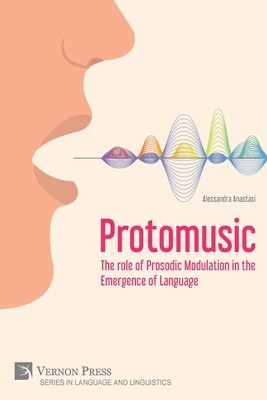
- We will send in 10–14 business days.
- Author: Alessandra Anastasi
- Publisher: Vernon Press
- ISBN-10: 1648896391
- ISBN-13: 9781648896392
- Format: 15.2 x 22.9 x 1 cm, minkšti viršeliai
- Language: English
- SAVE -10% with code: EXTRA
Reviews
Description
Anastasi introduces an alternative vision about language development and music involvement to the current scientific discourse. Her view is based on a rigorous evolutionary perspective, through which she not only demonstrates the hypothesis of vocal continuity with other species via morphological data but, more importantly, also demonstrates how music is first and foremost a biological and cognitive trait. The bond between animal and human communication is here interpreted as an interspecific universal with a clear evolutionary impact on the speech's natural history. Such continuity does not undermine the species-specificity of our linguistic system and, at the same time, supports the theory according to which music had a clear evolutionary role in the inception of the prosodic and musical components of speech. In leaning towards a bio-naturalistic approach, the most convincing view is that of a vocal and functional continuity of music. This appears to be demonstrable through the evolutionary past of vocality in other animal species, not constrained from having some form of cultural transmission.
The book evidences that the current research scenario on non-human animal communication benefits from the support of semiotics and, specifically, zoosemiotics. The latter approach enables us to interpret music and chant not only as a simple formal and meaningless exercise, but rather as a communicative element perceived and processed by organisms equipped with cognitive abilities. Anastasi argues that vocal continuity, made possible by biological constraints that mark its anatomical and physiological aspects, places human beings in a relationship of semiotic continuity with non-human communication forms. In turn, this enables us to better describe the phylogenetic processes which determined the development of musical behaviours in the Sapiens, as well as the way in which such behaviours interwove with the expressive vocality of the animal world.
EXTRA 10 % discount with code: EXTRA
The promotion ends in 23d.12:57:23
The discount code is valid when purchasing from 10 €. Discounts do not stack.
- Author: Alessandra Anastasi
- Publisher: Vernon Press
- ISBN-10: 1648896391
- ISBN-13: 9781648896392
- Format: 15.2 x 22.9 x 1 cm, minkšti viršeliai
- Language: English English
Anastasi introduces an alternative vision about language development and music involvement to the current scientific discourse. Her view is based on a rigorous evolutionary perspective, through which she not only demonstrates the hypothesis of vocal continuity with other species via morphological data but, more importantly, also demonstrates how music is first and foremost a biological and cognitive trait. The bond between animal and human communication is here interpreted as an interspecific universal with a clear evolutionary impact on the speech's natural history. Such continuity does not undermine the species-specificity of our linguistic system and, at the same time, supports the theory according to which music had a clear evolutionary role in the inception of the prosodic and musical components of speech. In leaning towards a bio-naturalistic approach, the most convincing view is that of a vocal and functional continuity of music. This appears to be demonstrable through the evolutionary past of vocality in other animal species, not constrained from having some form of cultural transmission.
The book evidences that the current research scenario on non-human animal communication benefits from the support of semiotics and, specifically, zoosemiotics. The latter approach enables us to interpret music and chant not only as a simple formal and meaningless exercise, but rather as a communicative element perceived and processed by organisms equipped with cognitive abilities. Anastasi argues that vocal continuity, made possible by biological constraints that mark its anatomical and physiological aspects, places human beings in a relationship of semiotic continuity with non-human communication forms. In turn, this enables us to better describe the phylogenetic processes which determined the development of musical behaviours in the Sapiens, as well as the way in which such behaviours interwove with the expressive vocality of the animal world.


Reviews